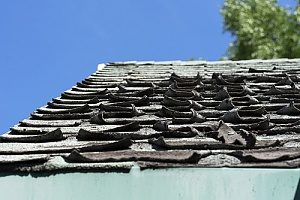 Potent winds and storms are some of the most harming factors your roof will encounter in the course of its life span. When your roof need to be ready to withstand major storms, from time to time winds are so powerful that even the most tough roofing material does not stand a opportunity.
Potent winds and storms are some of the most harming factors your roof will encounter in the course of its life span. When your roof need to be ready to withstand major storms, from time to time winds are so powerful that even the most tough roofing material does not stand a opportunity.
Whether or not from falling particles or the wind itself, it’s important to be able to recognize roof injury after a storm so you can consider the vital motion.
How Strong Do Winds Need to have To Be To Damage a Roof?
Most wind injury from thunderstorms is caused by straight-line winds, also referred to as downbursts. The speed of these winds will establish the extent of hurt they finally induce:
- 25 to 30 mph winds lead to huge branches to sway. You will also hear whistling sounds in close by energy and cell phone traces.
- 30 to 40 mph winds make whole trees transfer and sway.
- 40 to 45 mph winds split twigs and compact branches.
- 45 to 55 mph winds snap big branches and weak tree limbs and lead to slight structural harm.
- 55 to 65 mph winds build moderate structural and tree harm.
- Over 65 mph winds produce weighty to intense structural and tree damage.
Winds over 45 mph are those that householders must shell out notably near notice to as they pose the most considerable chance of roof problems.
Regardless of regardless of whether your roof destruction is in depth or insignificant, you ought to contact for a expert roof inspection. Dependent on the harm, you could require to file an insurance coverage declare and request roof fix from a knowledgeable contractor.
Signals of Roof Wind Hurt
Soon after the storm dies down, head outdoors to visually inspect for hurt to your roof.
Indications that reveal your roof sustained considerable wind injury include:
- Shingle destruction: Lacking, peeling, curling, or in any other case visibly weakened shingles are a sure signal that strong winds have wreaked havoc on your roof.
- Granule loss: Though granule reduction occurs by natural means about time, significant horizontal lines, bare places, and cracks are symptoms that the seal on your shingles has damaged.
- Water leaks: There may be a hole in your roof that isn’t as visible outdoors. Examine the partitions and ceilings inside your home for h2o injury.
- Debris: Although this does not include the roof alone, the presence of large branches and other particles on the ground can give you some indicator of roof damage.
- Lifting shingles: Delicate winds might display residual hurt from a latest storm if you search and pay attention for flapping on your roof. You may well require an inspection to pinpoint which shingles have loosened in close proximity to the nails.
- Divots: Generally forming at the edge of your shingles after blunt impression, divots usually arrive with broken seals, which ought to be addressed quickly by a roof repair specialist.
What Methods Need to You Take Just after Roof Wind Harm?
If a really serious storm has just lately ripped by means of your Virginia neighborhood, below are a several actions you can get to guarantee your roof has not been destroyed (and some more ways to consider if it is):
- Examine your residence for seen indicators of injury pursuing a storm.
- Safely clear up any debris all-around your lawn.
- Perform a visual inspection to detect h2o leaks on ceilings and walls.
- Photograph any hurt you do locate.
- Make contact with Past Exteriors for a no cost, on-site, no-obligation roof repair quotation.
- File an insurance claim with your supplier.
- Program your roof fix.
Has your roof sustained sizeable wind damage pursuing a weighty storm? Connect with Further than Exteriors at (703) 830-0863 to ask for your roof maintenance quotation right now!

